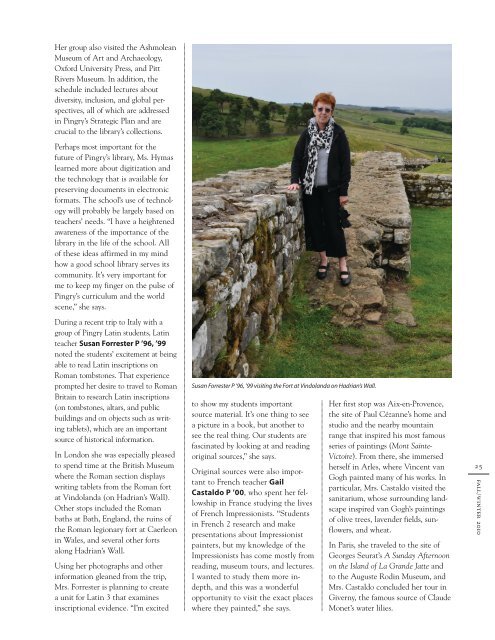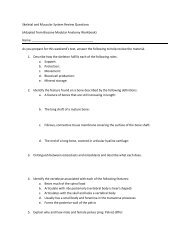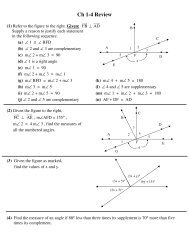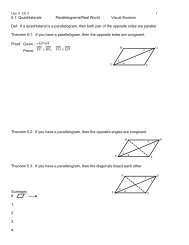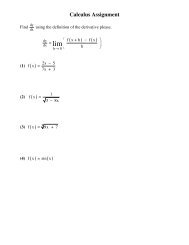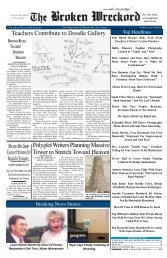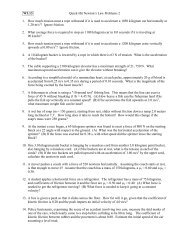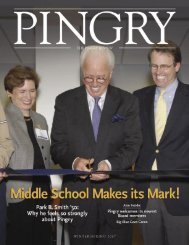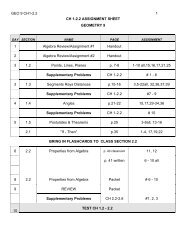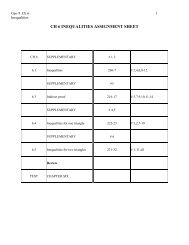Fall/Winter 2010 - Pingry School
Fall/Winter 2010 - Pingry School
Fall/Winter 2010 - Pingry School
Create successful ePaper yourself
Turn your PDF publications into a flip-book with our unique Google optimized e-Paper software.
Her group also visited the Ashmolean<br />
Museum of Art and Archaeology,<br />
Oxford University Press, and Pitt<br />
Rivers Museum. In addition, the<br />
schedule included lectures about<br />
diversity, inclusion, and global perspectives,<br />
all of which are addressed<br />
in <strong>Pingry</strong>’s Strategic Plan and are<br />
crucial to the library’s collections.<br />
Perhaps most important for the<br />
future of <strong>Pingry</strong>’s library, Ms. Hymas<br />
learned more about digitization and<br />
the technology that is available for<br />
preserving documents in electronic<br />
formats. The school’s use of technology<br />
will probably be largely based on<br />
teachers’ needs. “I have a heightened<br />
awareness of the importance of the<br />
library in the life of the school. All<br />
of these ideas affirmed in my mind<br />
how a good school library serves its<br />
community. It’s very important for<br />
me to keep my finger on the pulse of<br />
<strong>Pingry</strong>’s curriculum and the world<br />
scene,” she says.<br />
During a recent trip to Italy with a<br />
group of <strong>Pingry</strong> Latin students, Latin<br />
teacher Susan Forrester P ’96, ’99<br />
noted the students’ excitement at being<br />
able to read Latin inscriptions on<br />
Roman tombstones. That experience<br />
prompted her desire to travel to Roman<br />
Britain to research Latin inscriptions<br />
(on tombstones, altars, and public<br />
buildings and on objects such as writing<br />
tablets), which are an important<br />
source of historical information.<br />
In London she was especially pleased<br />
to spend time at the British Museum<br />
where the Roman section displays<br />
writing tablets from the Roman fort<br />
at Vindolanda (on Hadrian’s Wall).<br />
Other stops included the Roman<br />
baths at Bath, England, the ruins of<br />
the Roman legionary fort at Caerleon<br />
in Wales, and several other forts<br />
along Hadrian’s Wall.<br />
Using her photographs and other<br />
information gleaned from the trip,<br />
Mrs. Forrester is planning to create<br />
a unit for Latin 3 that examines<br />
inscriptional evidence. “I’m excited<br />
Susan Forrester P ’96, ’99 visiting the Fort at Vindolanda on Hadrian’s Wall.<br />
to show my students important<br />
source material. It’s one thing to see<br />
a picture in a book, but another to<br />
see the real thing. Our students are<br />
fascinated by looking at and reading<br />
original sources,” she says.<br />
Original sources were also important<br />
to French teacher Gail<br />
Castaldo P ’00, who spent her fellowship<br />
in France studying the lives<br />
of French Impressionists. “Students<br />
in French 2 research and make<br />
presentations about Impressionist<br />
painters, but my knowledge of the<br />
Impressionists has come mostly from<br />
reading, museum tours, and lectures.<br />
I wanted to study them more indepth,<br />
and this was a wonderful<br />
opportunity to visit the exact places<br />
where they painted,” she says.<br />
Her first stop was Aix-en-Provence,<br />
the site of Paul Cézanne’s home and<br />
studio and the nearby mountain<br />
range that inspired his most famous<br />
series of paintings (Mont Sainte-<br />
Victoire). From there, she immersed<br />
herself in Arles, where Vincent van<br />
Gogh painted many of his works. In<br />
particular, Mrs. Castaldo visited the<br />
sanitarium, whose surrounding landscape<br />
inspired van Gogh’s paintings<br />
of olive trees, lavender fields, sunflowers,<br />
and wheat.<br />
In Paris, she traveled to the site of<br />
Georges Seurat’s A Sunday Afternoon<br />
on the Island of La Grande Jatte and<br />
to the Auguste Rodin Museum, and<br />
Mrs. Castaldo concluded her tour in<br />
Giverny, the famous source of Claude<br />
Monet’s water lilies.<br />
25<br />
fall/winter <strong>2010</strong>


